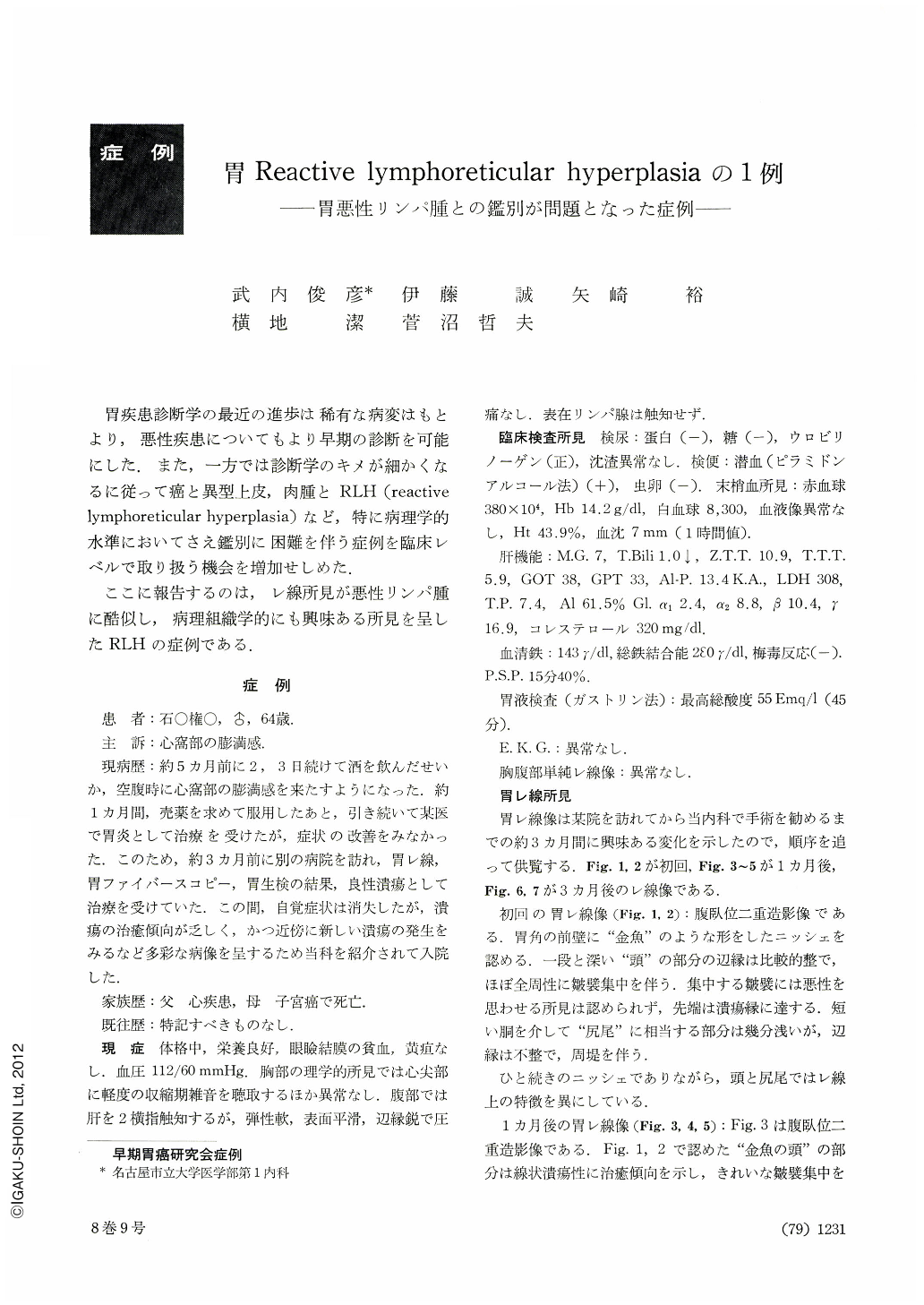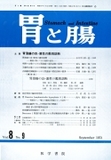Japanese
English
- 有料閲覧
- Abstract 文献概要
- 1ページ目 Look Inside
胃疾患診断学の最近の進歩は稀有な病変はもとより,悪性疾患についてもより早期の診断を可能にした.また,一方では診断学のキメが細かくなるに従って癌と異型上皮,肉腫とRLH(reactive lymphoreticular hyperplasia)など,特に病理学的水準においてさえ鑑別に困難を伴う症例を臨床レベルで取り扱う機会を増加せしめた.
ここに報告するのは,レ線所見が悪性リンパ腫に酷似し,病理組織学的にも興味ある所見を呈したRLHの症例である.
Case; G. I. 64-year-old male.
The patient visited to our hospital with a complaint of gastric fullness. First gastro-intestinal series revealed a niche of “goldfish-like” fashion on the anterior wall of the gastric angulus and a protruding-wall was recognized at the “tail” portion. At the second x-ray examination a month later, the “head” portion of the niche turned into the linear ulcer scar, while the “tail” portion changed into a large, shallow niche with an enlarged protruding-wall. Besides, an another new ulcer with a remarkable protruding-wall was recognized on the lesser curvature of the gastric angulus. At the third x-ray examination three months later, the “tail” portion also changed into the linear ulcer scar and sticked to that of the “head” portion. The new ulcer was transformed into a simple niche without the protruding-wall. From these variable changes on x-ray examination, these lesions were suspected the gastric Reactive Lymphoreticular Hyperplasia (RLH. But the picture of “a localized tumorous mass with a shallow central ulceration”, which was recognized at the second x-ray examination, resembles closely to the gastric malignant lymphomas in the literature and not to RLH. In the resected specimen an oval-shaped ulcer was recognized at the gastric angulus. And on the anterior wall just near to the ulcer, a long linear ulcer scar was recognized along the gastric major axis. No particular views were found macroscopically.
Microscopically, the monotonous proliferation of the atypical reticulum-cells and many mitosis, which indicate malignancy, were recognized at a small portion in the margin of the ulcer. But judging from the whole findings, these lesions were diagnosed gastric RLH. In some of the lesions with the hyperplasia of the lympho-reticular tissue, it is difficult to differentiate histologically benign or malignant. On this account, it would be probable such as this case that x-ray findings of RLH. disclose neoplastic changes in its clinical duration at times.
So under the existing circumstance, it would be necessary to keep in mind that those x-ray findings as mentioned above are one of the characteristic picture of the gastric RLH. We think that the lesion with the hyperplasia of the lympho reticular tissue as our case should be discussed with the conception of the borderline lesion such as A.T.P. in epitherial lesion of the stomach.

Copyright © 1973, Igaku-Shoin Ltd. All rights reserved.


